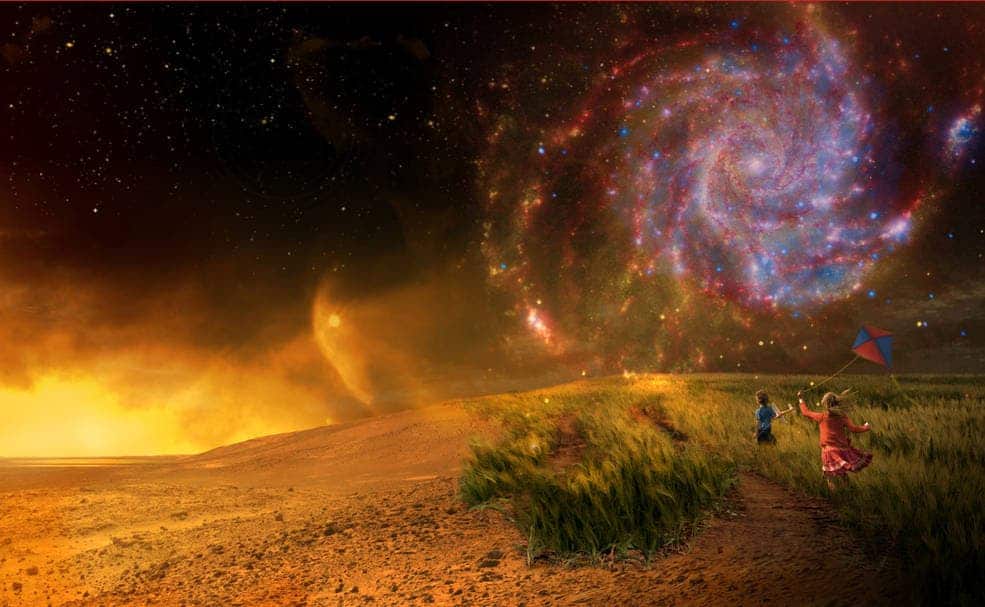Just after NASA researchers made the bold claim that they will find alien life in less than 20 years, the space agency has officially launched a project to look for it. The Nexus for Exoplanet System Science, or “NExSS” will be a project integrating several fields of science, aiming to better understand exoplanets with the potential to host life, as well as planet-life interactions.

An image charge with symbolism: the search for life beyond our solar system requires unprecedented cooperation across scientific disciplines. NASA’s NExSS collaboration includes those who study Earth as a life-bearing planet (lower right), those researching the diversity of solar system planets (left), and those on the new frontier, discovering worlds orbiting other stars in the galaxy (upper right).
Credits: NASA
“This interdisciplinary endeavor connects top research teams and provides a synthesized approach in the search for planets with the greatest potential for signs of life,” says Jim Green, NASA’s Director of Planetary Science. “The hunt for exoplanets is not only a priority for astronomers, it’s of keen interest to planetary and climate scientists as well.”
The study of exoplanets is a relatively new field, but has blossomed incredibly in recent years. The first exoplanet was discovered only in 1995, but in the last six years alone, we’ve managed to find over 1,000 exoplanets with thousands of additional candidates waiting to be found. Scientists are working on establishing not only the ‘Goldilocks area‘, in which planets might hold liquid water, but also the search for biosignatures, or signs of life.
Of course, in order to do this, astronomy is simply not enough – you need to understand how the chemistry and geology of an exoplanet might interact with biology, and what visible signals they give out. James Graham, a UC Berkeley professor of astronomy, and leader of the Berkeley/Stanford team explains that the project will bring together researchers from several fields.
“We’re combining techniques to discover new information about how planets form, their range of properties and what sorts of planets are most common, with the eventual goal of finding terrestrial planets and venues for life in the universe,” Graham said.
NExSS will tap into the collective expertise from each of the science communities supported by NASA’s Science Mission Directorate:
- Earth scientists develop a systems science approach by studying our home planet.
- Planetary scientists apply systems science to a wide variety of worlds within our solar system.
- Heliophysicists add another layer to this systems science approach, looking in detail at how the Sun interacts with orbiting planets.
- Astrophysicists provide data on the exoplanets and host stars for the application of this systems science framework.
The Yale University team, headed by Debra Fischer, will design new spectrometers with the stability to reach Earth-detecting precision for nearby stars. The team will also make improvements to Planet Hunters, www.planethunters.org, a web interface that allows citizen scientists to search for transiting planets in the NASA Kepler public archive data. Meanwhile, a group led by Neal Turner at NASA’s Jet Propulsion Laboratory, California Institute of Technology, will work to understand why so many exoplanets orbit close to their stars. A team at the University of Wyoming, headed by Hannah Jang-Condell, will explore the evolution of planet formation while a Penn State University team, led by Eric Ford, will strive to further understand planetary formation by investigating the bulk properties of small transiting planets and implications for their formation.
The entire thing will be coordinated by Natalie Batalha of NASA’s Ames Research Center, Dawn Gelino with NExScI, the NASA Exoplanet Science Institute, and Anthony del Genio of NASA’s Goddard Institute for Space Studies. All in all, researchers from ten universities will participate.
All in all, it’s a huge thing, with huge potential implications; it may finally help us understand whether or not we are alone in the galaxy.
Source: NASA.









